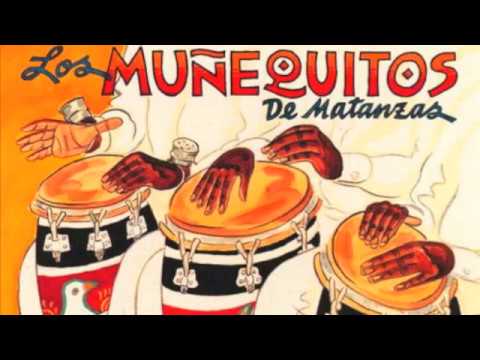 THE MUÑEQUITOS DE MATANZAS, CUBAN PATRIMONIAL TESTIMONY.
THE MUÑEQUITOS DE MATANZAS, CUBAN PATRIMONIAL TESTIMONY.
The rumba has been declared a World Heritage Site in 2016 by the United Nations Office for Education, Science and Culture, and Los Muñequitos are among the best groups of this genre on the Island.
The director of the documentary ‘Los Muñequitos de Matanzas, the legend en route’, Julia Mirabal has declared that in a work in production compiles all the information available, inside and outside of Cuba, about Los Muñequitos de Matanzas, including the stories of its members , in particular of the founders.
Written by the director together with the musicologist, Cary Diez, the documentary intends to rescue the Cuban musical heritage, and the clarity of this perspective also confers a certain historical and anthropological value, which Julia Mirabal has also sustained in her television space Site of Art.
The documentary lasts 97 minutes and includes the testimony of many Cuban and foreign personalities, musicians and specialists, among which Leo Brouwer stand out; the director of the National Symphony Orchestra, Enrique Pérez Mesa; the classical pianist Frank Fernández, who composed and recorded the Guaguanpiano theme for the Muñequitos; Pablo Milanés; the choreographer and dancer Santiago Alfonso; the founding pianist of the Van Van orchestra, César Pedroso; the researcher José Reyes Fortún, and Cary Diez herself.
Born with the name of Guaguancó Matancero in the La Marina neighborhood of the province of Matanzas, the group recorded an album the following year of founded, with the Cuban label Puchito, which included the songs Los Beodos and Los Muñequitos, and the latter had both success that caused the change of name and become Los Muñequitos de Matanzas.
Renowned innovators of the rumba, Los Muñequitos have continued to present their albums since the 50s to the present. His discography includes titles such as Guaguancó, Rumba Abierta, Cantar Maravilloso; Hot Rumba, Rumberos de Corazón (on their 50th anniversary), Tambor de Fuego and De Palo Pa ‘Rumba.
A stellar moment arrived in 2001, when the group recorded three numbers on the album La rumba Soy Yo, which brought together the best Cuban rumberos in an anthological record that won a Latin Grammy Award in the category of Best Folk Album. Produced also by the musicologist Cary Diez and the composer and director Joaquín Betancourt, the album includes the different ways of playing the rumba.
The renowned musicologist María Teresa Linares has highlighted that Los Muñequitos “preserve the impeccable style of their teachers, the founders, they also preserve their repertoire, with current themes with their own experiences and with themes based on ancient rumbas and key songs”.
 “LOS MUÑEQUITOS DE MATANZAS”, TESTIMONIO PATRIMONIAL CUBANO.
“LOS MUÑEQUITOS DE MATANZAS”, TESTIMONIO PATRIMONIAL CUBANO.
La rumba ha sido declarada patrimonio de la humanidad en 2016 por la Oficina de Naciones Unidas para la Educación, la Ciencia y la Cultura, y Los Muñequitos se encuentran entre las mejores agrupaciones de este género en la Isla.
La directora del documental ‘Los Muñequitos de Matanzas, la leyenda en ruta’, Julia Mirabal ha declarado que en una obra en producción recopila toda la información disponible, dentro y fuera de Cuba, sobre Los Muñequitos de Matanzas, incluidas las historias de sus integrantes, en particular de los fundadores.
Con guión de la realizadora junto a la musicóloga, Cary Diez, el documental tiene intención de rescate del patrimonio musical cubano, y la claridad de esta perspectiva le confiere también un cierto valor histórico y antropológico, que Julia Mirabal ha sostenido también en su espacio televisivo Sitio del Arte.
El documental tiene una duración de 97 minutos e incluye el testimonio de muchas personalidades cubanas y extranjeras, músicos y especialistas, entre los que resaltan Leo Brouwer ; el director de la Orquesta Sinfónica Nacional, Enrique Pérez Mesa; el pianista clásico Frank Fernández , quien compuso y grabó para los Muñequitos el tema Guaguanpiano; Pablo Milanés ; el coreógrafo y bailarín Santiago Alfonso; el pianista fundador de la orquesta Van Van, César Pedroso; el investigador José Reyes Fortún, y la propia Cary Diez.
Nacidos con el nombre de Guaguancó Matancero en el barrio La Marina de la provincia de Matanzas, el grupo grabó un disco al siguiente año de fundado, con el sello cubano Puchito, que incluyó los temas Los Beodos y Los Muñequitos, y este último tuvo tanto éxito que provocó el cambio de nombre y se convierten en Los Muñequitos de Matanzas.
Reconocidos innovadores de la rumba, Los Muñequitos han continuado presentando sus discos desde la década del 50 hasta el presente. Su discografía incluye títulos como Guaguancó, Rumba Abierta, Cantar Maravilloso; Rumba Caliente, Rumberos de Corazón (en su aniversario 50), Tambor De Fuego y De Palo Pa’ Rumba.
Un momento estelar llegó en el 2001, cuando la agrupación grabó tres números en el álbum La rumba Soy Yo, que reunió a los mejores rumberos de Cuba en un disco antológico que ganó un Premio Grammy Latino en la categoría de Mejor Álbum Folklórico. Producido también por la musicóloga Cary Diez y el compositor y director Joaquín Betancourt, el disco recoge las diferentes formas de tocar la rumba.
La reconocida musicóloga María Teresa Linares ha destacado que Los Muñequitos “conservan el estilo impecable de sus maestros, los fundadores, conservan también su repertorio, con temas actuales con sus propias vivencias y con temas basados en antiguas rumbas y cantos de clave”.
Agencies/ CiberCuba/ Internet Photos/ YouTube/ Arnoldo Varona/ TheCubanHistory.com
THE CUBAN HISTORY, HOLLYWOOD.






